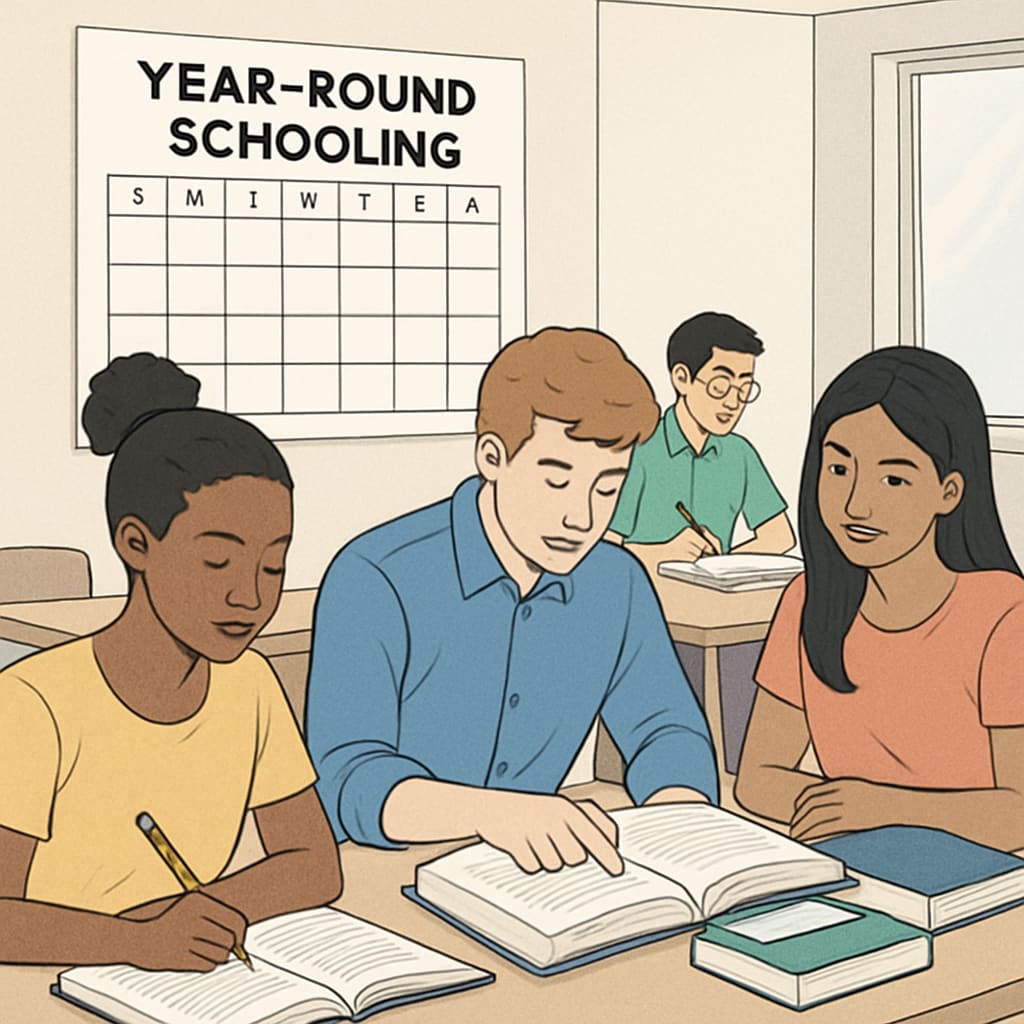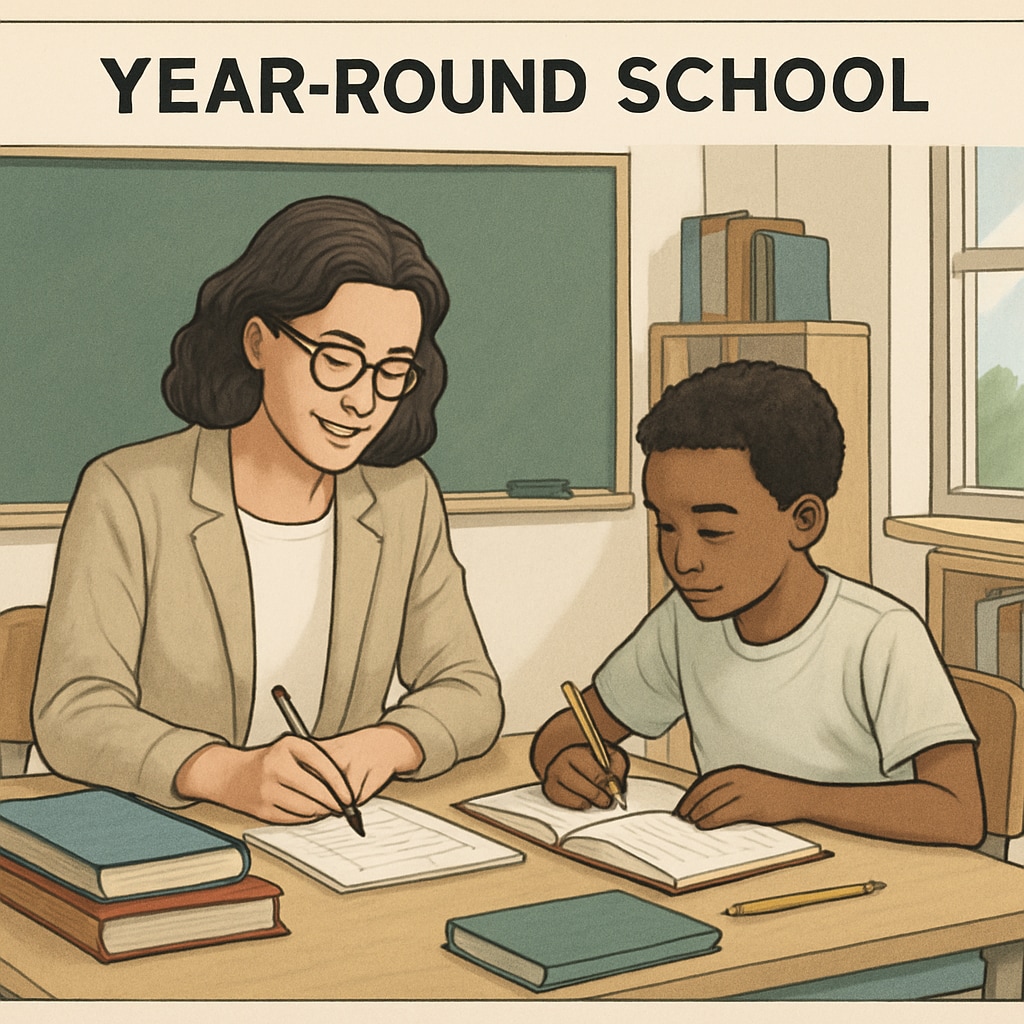For years, the traditional school calendar with long summer breaks has been a staple of education systems worldwide. However, recent discussions around year-round schooling, summer break reform, and knowledge retention suggest that this model may not be the most effective for sustaining student learning. One innovative approach—distributing school days more evenly throughout the year—could provide a solution to the problem of “summer learning loss,” a phenomenon where students forget a significant portion of what they learned during the previous academic year.
The Problem with Long Summer Breaks
Long summer vacations, a hallmark of traditional schooling, were historically designed to accommodate agricultural schedules. However, in modern times, they might do more harm than good, especially when it comes to knowledge retention. Studies have shown that students can lose up to two months of mathematical skills and reading comprehension over the summer. This “summer slide” disproportionately affects students from disadvantaged backgrounds, as they often lack access to educational resources during the break.
In addition, the “catch-up” period at the start of a new academic year consumes valuable instructional time. Teachers often spend the first several weeks reviewing material from the previous year rather than advancing new concepts. This cycle not only hampers progress but also creates a fragmented learning experience for students.

How Year-Round Schooling Can Help
Year-round schooling (YRS) offers a compelling alternative. Instead of one long summer vacation, the academic calendar is broken into shorter instructional blocks interspersed with frequent breaks. For example, a “45-15” model involves 45 days of classes followed by a 15-day break. Another flexible option is “one week on, one week off,” which promotes continuous engagement without overwhelming students or teachers.
This approach minimizes lengthy interruptions in learning, allowing students to retain knowledge more effectively. Regular breaks also provide opportunities for enrichment programs, targeted interventions, or simply downtime to recharge—without the extended gap that leads to learning loss. Furthermore, teachers can use periodic breaks to refine lesson plans and assess student progress, creating a more dynamic and adaptive educational environment.
Potential Benefits Beyond Knowledge Retention
While the primary goal of year-round schooling is to combat knowledge loss, its benefits extend beyond academics:
- Reduced Burnout: Shorter, more frequent breaks can alleviate stress and burnout for both students and teachers.
- Improved Attendance: Flexible schedules can accommodate family vacations and personal commitments, potentially reducing absenteeism.
- Equity in Education: Frequent breaks provide opportunities for schools to offer support programs, benefiting students who might otherwise fall behind during long vacations.
Moreover, year-round schooling can adapt to the needs of specific communities. For instance, schools in regions with extreme weather can adjust their calendars to avoid peak temperatures, enhancing the overall learning environment.

Challenges and Considerations
Despite its advantages, year-round schooling is not without challenges. Implementing this model requires logistical adjustments, such as modifying transportation schedules, coordinating extracurricular activities, and addressing childcare needs during shorter breaks. Additionally, transitioning from a traditional calendar to a year-round system may face resistance from parents, students, and educators accustomed to the status quo.
Financial implications must also be considered. While year-round schooling can reduce costs associated with summer learning programs, it may increase operational expenses, including utilities and staffing. Policymakers and school administrators must weigh these factors carefully to ensure the model’s feasibility and sustainability.
A Future Worth Exploring
In conclusion, year-round schooling, summer break reform, and knowledge retention present a promising opportunity to rethink traditional education models. By addressing the pitfalls of long summer breaks and promoting continuous learning, year-round schooling could enhance academic outcomes and foster a more equitable and adaptable education system. Although challenges remain, the potential benefits for students, teachers, and communities make this approach worth exploring. As education evolves to meet the demands of a changing world, innovative solutions like year-round schooling could pave the way for a brighter, more sustainable future in K-12 education.
Readability guidance: This article uses short paragraphs, clear subheadings, and lists to ensure accessibility. Transition words like “however,” “in addition,” and “for example” are employed to improve flow and coherence. Active voice is prioritized, and sentence length is kept concise for easy comprehension.


